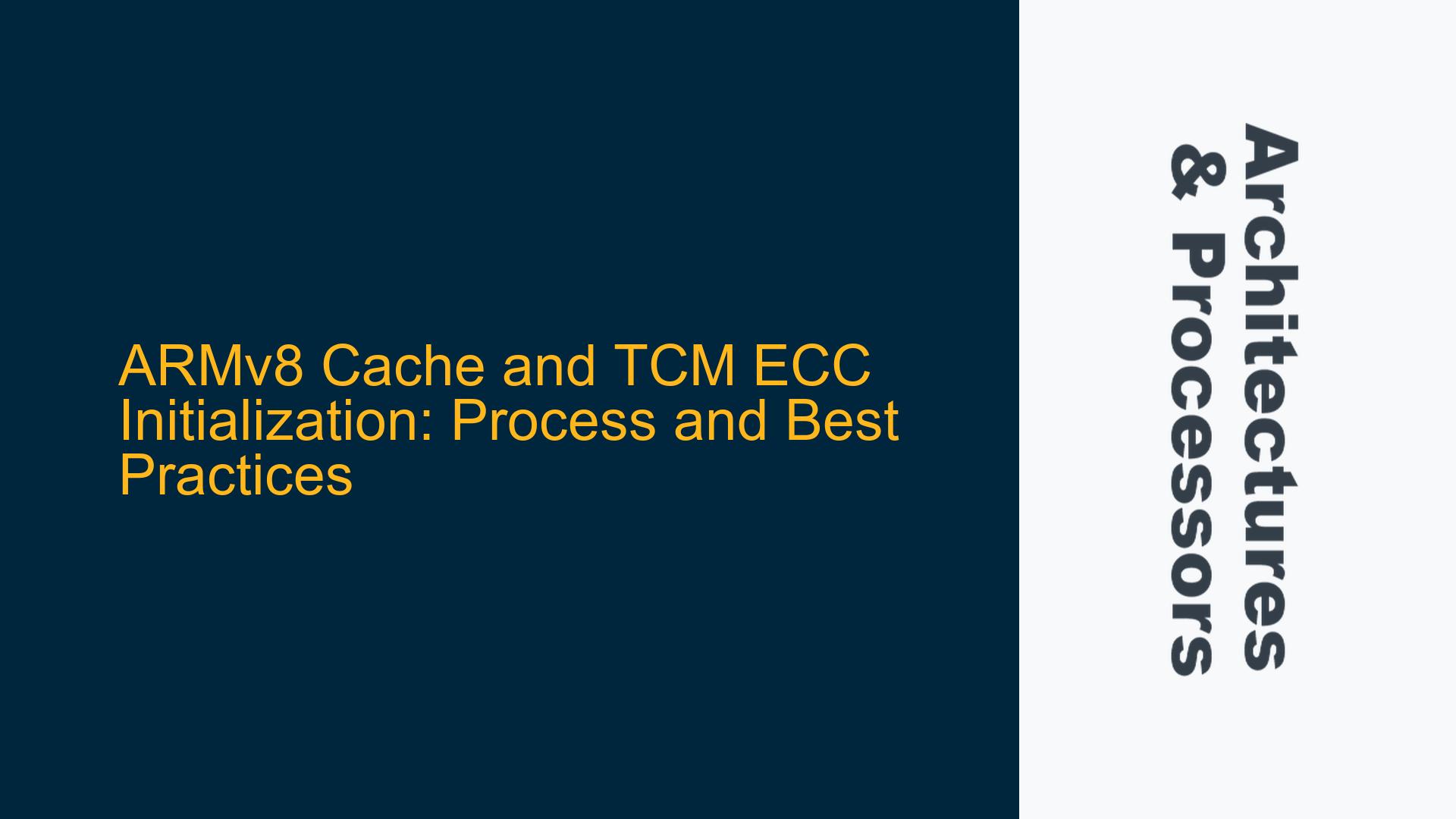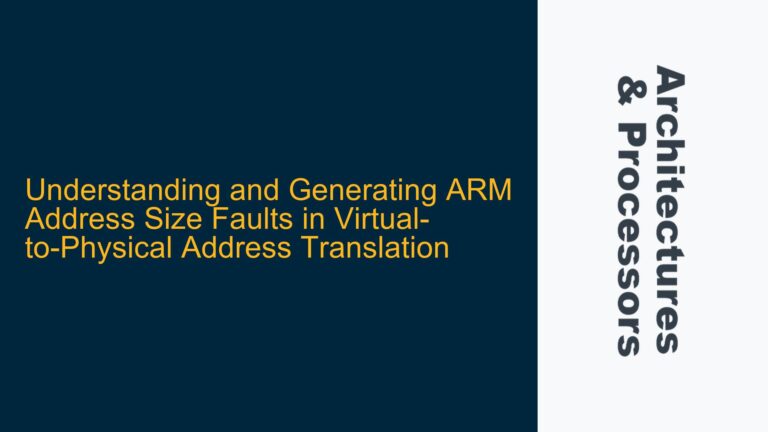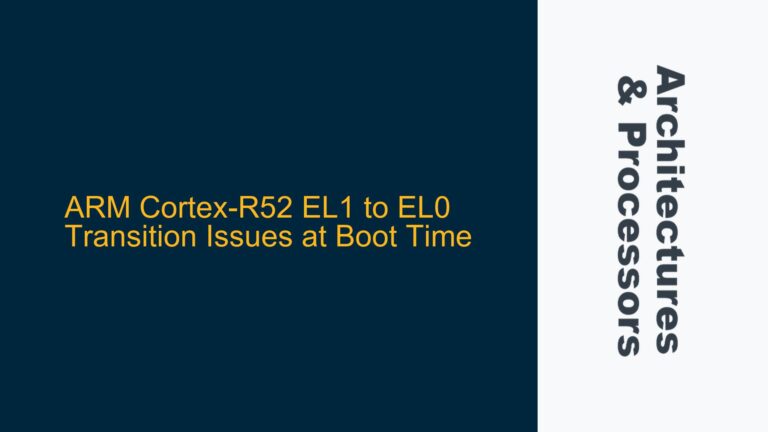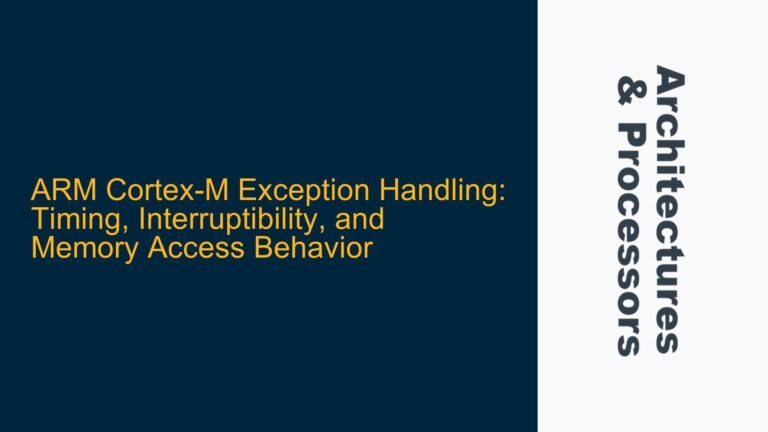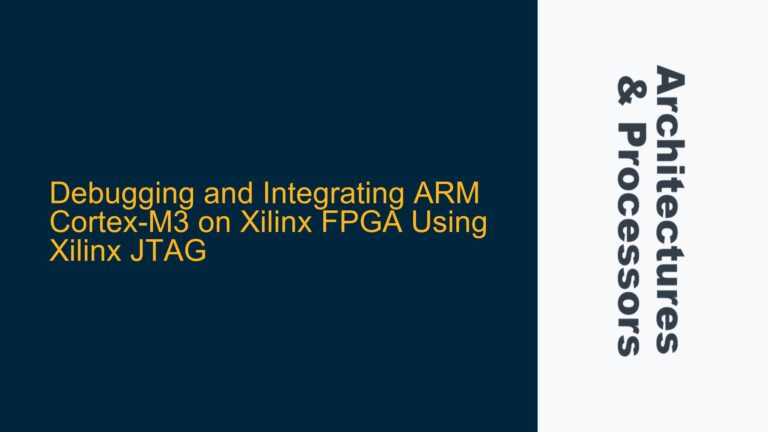ARMv8 Cache and TCM ECC Verification on Power-On
In ARMv8 architectures, the Cache and Tightly Coupled Memory (TCM) are critical components that significantly influence system performance and reliability. These memory subsystems often include Error Correction Code (ECC) functionality to detect and correct memory errors, ensuring data integrity. When the system powers on, the ECC verification mechanism is typically enabled to safeguard against memory corruption. However, a common question arises: Do the ECC verification codes for TCM and Cache need to be explicitly initialized during power-on, and if so, what is the correct process?
The ECC verification codes are essentially additional bits stored alongside the data in memory. These bits are used to detect and correct single-bit errors or detect multi-bit errors. On power-on, the state of the Cache and TCM is undefined, meaning the ECC bits could also be in an undefined state. If the ECC bits are not properly initialized, the system might misinterpret the data, leading to incorrect error detection or correction. This could result in system instability, data corruption, or even catastrophic failures in safety-critical applications.
The ARMv8 architecture provides mechanisms to manage ECC initialization, but the process is not always straightforward. The initialization process depends on several factors, including the specific ARM core, the memory controller, and the system configuration. For instance, some ARM cores automatically initialize the ECC bits during the boot process, while others require explicit software intervention. Understanding the nuances of ECC initialization is crucial for ensuring system reliability, especially in applications where data integrity is paramount.
ECC Initialization Requirements and Timing Considerations
The need for ECC initialization in ARMv8 Cache and TCM stems from the fact that the memory content, including ECC bits, is undefined at power-on. If the ECC bits are not initialized, the system might encounter spurious errors or fail to detect actual errors, leading to unpredictable behavior. The initialization process ensures that the ECC bits are set to a known state, typically corresponding to the initial data stored in memory.
One of the primary considerations is the timing of ECC initialization. The initialization must occur before the Cache and TCM are used for any data storage or retrieval. If the ECC bits are not initialized before the memory is accessed, the system might interpret the undefined ECC bits as valid error correction codes, leading to incorrect data correction or error detection. This is particularly critical in systems where the Cache and TCM are used early in the boot process, such as in real-time operating systems or embedded applications.
Another consideration is the interaction between the Cache, TCM, and the memory controller. In some ARMv8 implementations, the memory controller handles ECC initialization automatically, while in others, the software must explicitly initialize the ECC bits. The initialization process might involve writing specific patterns to the memory or using dedicated hardware instructions to set the ECC bits to a known state. The exact process depends on the specific ARM core and the system configuration.
Additionally, the ECC initialization process must account for the memory hierarchy. In ARMv8 architectures, the Cache and TCM are part of a complex memory hierarchy that includes multiple levels of cache, main memory, and possibly other memory-mapped devices. The initialization process must ensure that the ECC bits are correctly initialized across the entire memory hierarchy, taking into account the interactions between different levels of cache and memory.
Implementing ECC Initialization for ARMv8 Cache and TCM
Implementing ECC initialization for ARMv8 Cache and TCM involves several steps, including configuring the memory controller, initializing the ECC bits, and verifying the initialization. The exact process depends on the specific ARM core and system configuration, but the following steps provide a general guideline for implementing ECC initialization.
First, the memory controller must be configured to enable ECC functionality. This typically involves setting specific bits in the memory controller’s configuration registers to enable ECC for the Cache and TCM. The configuration process might also involve setting the ECC mode, such as single-bit error correction or multi-bit error detection. The exact configuration depends on the specific memory controller and the desired level of error detection and correction.
Once the memory controller is configured, the next step is to initialize the ECC bits. This can be done using a combination of hardware and software techniques. In some ARMv8 implementations, the hardware provides dedicated instructions for initializing the ECC bits. For example, the ARMv8 architecture includes the Data Cache Zero by Virtual Address (DC ZVA) instruction, which can be used to initialize the Cache and TCM with zero values, including the ECC bits. This instruction writes zeros to the specified memory range, ensuring that the ECC bits are set to a known state.
In cases where hardware instructions are not available, the ECC bits can be initialized using software. This typically involves writing specific patterns to the memory, ensuring that the ECC bits are set to a known state. The initialization process must cover the entire memory range used by the Cache and TCM, and it must be performed before the memory is used for any data storage or retrieval.
After the ECC bits are initialized, the next step is to verify the initialization. This involves reading back the memory and checking the ECC bits to ensure they are correctly set. The verification process can be done using hardware or software techniques. In some ARMv8 implementations, the memory controller provides status registers that indicate the state of the ECC bits. These registers can be read to verify that the ECC bits are correctly initialized.
Finally, the system must be configured to handle ECC errors. This involves setting up error handlers to detect and correct ECC errors during normal operation. The error handlers must be capable of handling both single-bit and multi-bit errors, depending on the ECC mode configured in the memory controller. The error handlers should also log errors for further analysis, helping to identify and correct any underlying issues in the memory subsystem.
In summary, ECC initialization for ARMv8 Cache and TCM is a critical process that ensures data integrity and system reliability. The initialization process involves configuring the memory controller, initializing the ECC bits, verifying the initialization, and setting up error handlers. The exact process depends on the specific ARM core and system configuration, but the general guidelines provided here can be used as a starting point for implementing ECC initialization in ARMv8 systems. By following these steps, developers can ensure that their systems are robust and reliable, even in the face of memory errors.
